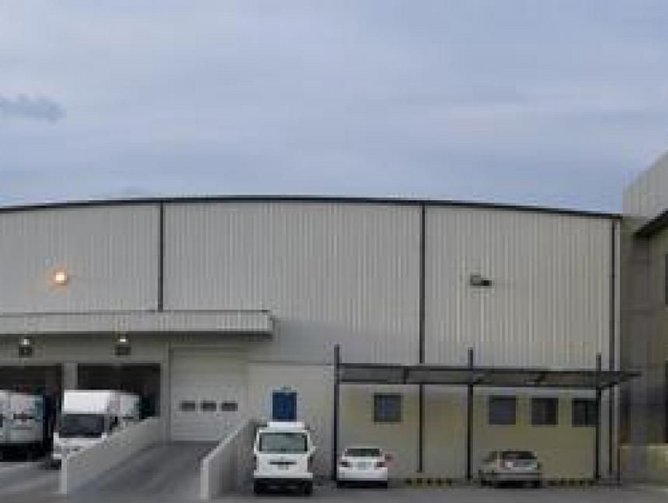An overhaul of IT and innovation culture at a company with interests spanning healthcare, food, pharmaceuticals and cosmetics appears a daunting challenge.
Since 1922 Tamer Group has been providing crucial pharmaceutical services to Saudi Arabia and beyond, its industry portfolio expanding through the century and elevating the company to the position of regional leader in many fields. Core activities include import, distribution, promotion, marketing and manufacturing.
As the business naturally took on more complex supply chains and distribution demands in order to maintain levels of excellence for clients, it came to the point in 2013 when a fresh approach to IT and technology was required.
Ihab Abdelrahman is Tamer Group’s Chief Innovation Officer and General Manager of the newly-established Tamer Innovate, an IT services provider to external clients, mainly in Saudi Arabia, and internally to Tamer Group colleagues.
“Three years ago I helped to established Tamer Group’s Business Transformation Board,” he explains. “I had a meeting with the board of directors and laid out a vision of transforming the company to a best-in-class with best practice in IT, optimisation of processes, more customer service and value focus and so forth.
“I lead the transformation board which is made up of key people from right across the business and we have completed many projects that we set out three years ago, so we have come a long way. Technology is a great enabler for us, and this has been recognised by the management in the business.”
Abdelrahman’s 31-strong IT team supports the whole group and is split into different units. One is responsible for business applications and another for the infrastructure and operations. The third group is the project management office, or PMO.
The physical establishment of the Business Transformation Board has also facilitated a crucial sea change in company culture, notably in how it handles challenges in a project-based manner involving personnel from across the entire business, driven by the PMO.
“This is becoming a cultural norm,” Abdelrahman says. “We are projectising all of the time, creating timelines, establishing priorities and allocating roles in everything we do. The second element of culture that has changed is the attitude of optimisation at all levels, especially in the supply chain as we are a distribution company. This is now a primary objective for everyone throughout the organisation.”
Supply chain planning
High up Abdelrahman’s priorities list in 2013 was to optimise Tamer Group’s inventory management across the board, what he terms supply chain planning. After analysing every factor and detail with managers from every department of the organisation, the adopted approach can be split roughly into two segments – supply and demand.
Distribution Resource Planning software from Oracle, a solution called ASAP, was implemented to inform management at distribution centres of how to balance their stock levels with other DCs in the Tamer network.
“This a unique capability in Oracles DRP,” Abdelrahman says. “Not only will it tell you what to buy and when, but before taking the buying decision it will tell you how to balance the inventory levels between different warehouses and DCs on a daily basis aiming at keeping inventory levels thin all the time (rephrase the same meaning if you see convenient).”
On the demand management side, Tamer Group implemented another piece of Oracle software, Demantra, which has enabled collaborative planning right the way through the organisation from sales reps right the way up to top level management. “We initially deployed this in our healthcare business and in Q1 of next year we will roll this out in the consumer line of the company,” Abdelrahman confirms.
Journey to the cloud
The other significant area of focus has been the company’s migration to a hybrid cloud architecture across many of its business and IT systems.
Abdelrahman’s conservative strategy has seen Tamer Group gradually move key IT elements (or components) away from on-premise and into a hosted cloud environment, a process which has proven invaluable in terms of enhancing operations and, perhaps more crucially, gathering knowledge.
“We started the cloud journey two years ago with a small investment in Oracle Sales Cloud , which is a salesforce automation software covering sales forecasts, information on leads and interactions,” he explains. “Again this started out in our medical business and now are using it across other departments as well. The team loves the application and they can now use it on mobile to pursue business opportunities.”
Another Oracle adoption followed, this time its transport management solution, OTM. Starting with the on-premise version, the fleet optimisation software is now partially migrated to the cloud and continues to provide crucial insight into truck deployment, route planning and load management. Other projects include migrating finance functionality at one of Tamer Group’s smaller units in Dubai, in what is a prototype test. Abdelraham is also considering moving some of the company’s email to the cloud, creating a hybrid communications system.
“I am eager to build this capacity gradually, and I am sure that eventually everybody in the market will be doing the same, adopting a hybrid environment and balancing the cloud with on premise solutions,” he says. “Creating solutions to integrate the two platforms is a key focus at the moment, and will be for the next three to five years. Hybrid comes along with a lot of complexity that every company will have to address.”
Tamer Innovate
It is this complexity so far encountered by Tamer Group that has inspired Abdelrahman in establishing and managing a new enterprise, Tamer Innovate.
Set up this year, its main objective is to emerge as a regional leader in supporting organisations’ transformations to the cloud, with a specialist niche of building hybrid models. Abdelrahman is hoping to sign a significant agreement with a holding company in Saudi Arabia, a business operating in many different sectors like Tamer Group.
“We are focusing on the big groups that want to embrace the cloud journey,” he adds. “We have very complex groups and different companies at Tamer, and I have been solving all of these problems and challenges in building our own hybrid cloud environment. I hope to be able to do the same for companies out there facing the same hurdles.”
Tamer Innovate is also looking to create some partnerships with other expert providers in the region to help boost its knowledge base as more business is taken on. However, it is Abdelrahman’s belief in building up internal IT capacity and expertise that is most evident. Although finding and recruiting talent is admittedly a big challenge, it is something which Tamer Group has approached with vigour.
“We believe in building up our own IT capacity internally, and developing our own team of experts who understand our business, our industry and the technology we need,” he explains. “All of the applications we are adopting we are implementing ourselves – our gradual approach to adopting the cloud is allowing us to do this and build up the knowledge of our team.”
And it is with Tamer Innovate that Abdelrahman will channel his main focus over the coming months and years, this having overseen maturation of the wider Tamer Group’s IT setup.
“We have reached a very stable stage at Tamer Group and the hybrid cloud transformation is going to be the big project for us,” he says. “I want Tamer Innovate to be positioned as a key player in the hybrid cloud market. Complexity is creating opportunity and I don’t see many other companies out there that can offer what we can in terms of creating hybrid solutions. We are very fast learners from our own internal experiences, and this is where we can make a big difference.”
Chief of change
In just four years Tamer Group has embraced new technology and new ways of thinking, a cultural shift driven from the top which has resulted in newly optimised IT systems and processes.
The company’s story is a clear example of how a CIO, this case a Chief Innovation Officer, can be crucial in instigating and implementing strategy that drives an entire business forward. “An effective CIO should be known as a Chief Change Officer,” Abdelrahman says.
“Being an effective CIO, you shouldn’t take a back seat until a technology vendor pushes something in front of you. This is a retroactive approach – a modern CIO must always be ahead of the business, looking at the direction set out by the board and thinking ahead of the game. How can we fulfil these various strategies through change? This is what we have to ask.”




